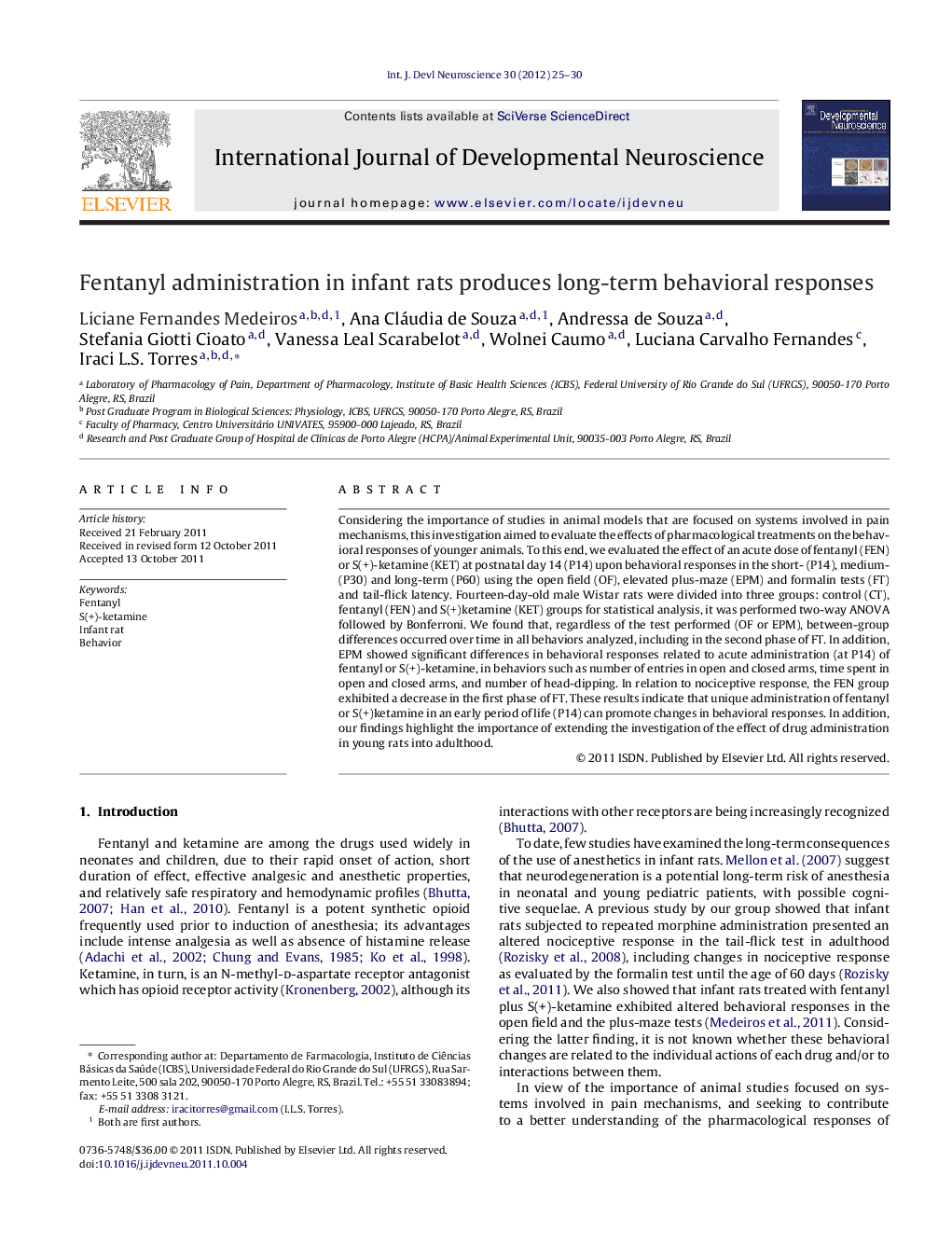| کد مقاله | کد نشریه | سال انتشار | مقاله انگلیسی | نسخه تمام متن |
|---|---|---|---|---|
| 2786470 | 1568415 | 2012 | 6 صفحه PDF | دانلود رایگان |

Considering the importance of studies in animal models that are focused on systems involved in pain mechanisms, this investigation aimed to evaluate the effects of pharmacological treatments on the behavioral responses of younger animals. To this end, we evaluated the effect of an acute dose of fentanyl (FEN) or S(+)-ketamine (KET) at postnatal day 14 (P14) upon behavioral responses in the short- (P14), medium- (P30) and long-term (P60) using the open field (OF), elevated plus-maze (EPM) and formalin tests (FT) and tail-flick latency. Fourteen-day-old male Wistar rats were divided into three groups: control (CT), fentanyl (FEN) and S(+)ketamine (KET) groups for statistical analysis, it was performed two-way ANOVA followed by Bonferroni. We found that, regardless of the test performed (OF or EPM), between-group differences occurred over time in all behaviors analyzed, including in the second phase of FT. In addition, EPM showed significant differences in behavioral responses related to acute administration (at P14) of fentanyl or S(+)-ketamine, in behaviors such as number of entries in open and closed arms, time spent in open and closed arms, and number of head-dipping. In relation to nociceptive response, the FEN group exhibited a decrease in the first phase of FT. These results indicate that unique administration of fentanyl or S(+)ketamine in an early period of life (P14) can promote changes in behavioral responses. In addition, our findings highlight the importance of extending the investigation of the effect of drug administration in young rats into adulthood.
► In open-field test, significant differences on behavioral responses were related to time.
► In plus-maze, altered behavioral responses were related to time and administration of fentanyl or S(+)ketamine.
► Fentanyl showed a decrease in nociceptive behavior in formalin test.
► Unique dose of fentanyl or S(+)ketamine in early life can promote changes in behavioral responses.
Journal: International Journal of Developmental Neuroscience - Volume 30, Issue 1, February 2012, Pages 25–30